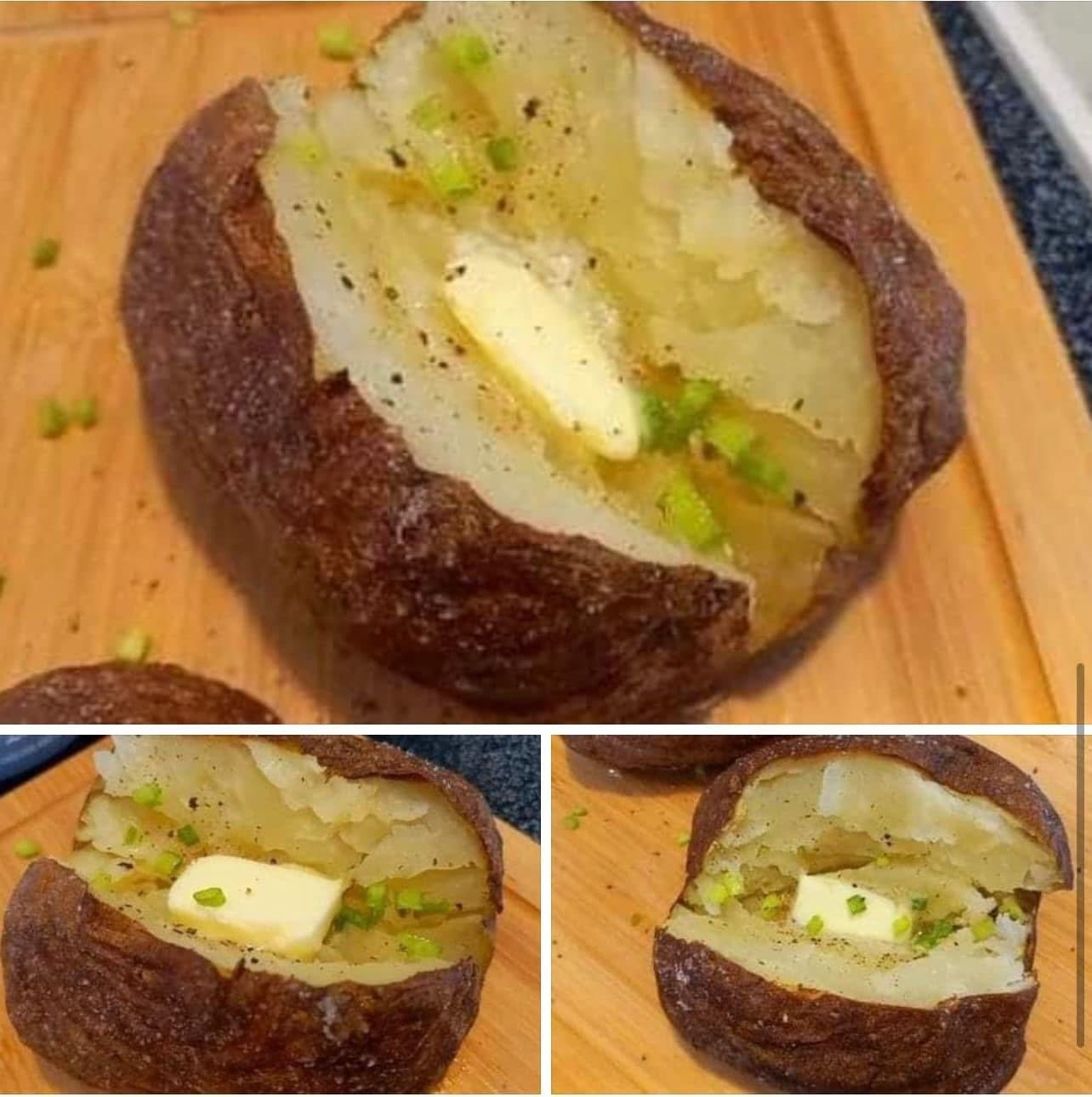Baked Potato: A Delicious and Nutritious Comfort Food
Introduction
The baked potato is a beloved and versatile comfort food enjoyed around the world. With its simple preparation and customizable toppings, it offers a satisfying meal or side dish for any occasion. Whether served as a hearty main course or paired with a protein, the baked potato remains a staple in many culinary traditions.
Origin
The baked potato’s origins trace back to the Andean regions of South America, where potatoes were first domesticated around 8,000 to 5,000 BCE. Spanish explorers brought the potato to Europe in the late 16th century, where it quickly became popular. The method of baking potatoes, however, evolved much later as various cultures found ways to cook them efficiently using heat sources like fire, embers, and eventually modern ovens.
Cultural Significance
Baked potatoes have grown into an iconic food in many cultures, particularly in Western countries. In the United States and Canada, baked potatoes are commonly served at barbecues, family dinners, and casual restaurants. In the United Kingdom, they are often referred to as “jacket potatoes” and are stuffed with a variety of fillings. The baked potato has also become a symbol of rustic, home-cooked comfort, appreciated for its simplicity and versatility.
Ingredients and Quantity
For a basic baked potato, you will need:
• 4 medium-sized russet potatoes (or other baking potatoes)
• Olive oil or butter (optional)
• Salt and pepper (to taste)
Optional Additions for Toppings:
• Sour cream
• Shredded cheese (cheddar, mozzarella, or your choice)
• Bacon bits
• Chives or green onions
• Butter
• Broccoli
• Chili or chili con carne
• Salsa
• Greek yogurt (as a healthier alternative to sour cream)
Tips for Success
1. Choose the Right Potato: Russet potatoes are the best for baking due to their fluffy texture once cooked.
2. Prick the Skin: Before baking, prick each potato a few times with a fork to allow steam to escape.
3. Coat the Skin: Rub the potatoes with olive oil or butter and sprinkle with salt before baking for a crispier skin.
4. Cook Evenly: If you’re baking multiple potatoes, make sure they’re similar in size to ensure even cooking.
5. Check for Doneness: A perfectly baked potato should feel soft when squeezed (use a towel to avoid burns), and a fork should easily pierce through the flesh.
Instructions
1. Preheat the Oven: Preheat your oven to 425°F (220°C).
2. Prepare the Potatoes: Wash and scrub the potatoes thoroughly. Pat them dry with a towel.
3. Coat with Oil and Salt: Rub each potato with a thin layer of olive oil or butter and sprinkle with salt and pepper.
4. Bake: Place the potatoes directly on the oven rack or on a baking sheet. Bake for about 45-60 minutes, turning once halfway through. The potatoes are done when a fork or knife easily pierces through to the center.
5. Serve: Cut a slit in the top of each potato and fluff the inside with a fork. Add your desired toppings and serve hot.
Description
A well-prepared baked potato has a crisp, golden skin with a soft and fluffy interior. The contrast between the texture of the skin and the softness of the flesh makes for a satisfying eating experience. Toppings can range from creamy and cheesy to savory or spicy, making the baked potato an adaptable dish for all tastes.
Nutritional Information (Per Medium Baked Potato with Skin)
• Calories: ~160
• Protein: ~4g
• Carbohydrates: ~37g
• Fiber: ~4g
• Fat: ~0g (without toppings)
• Vitamin C: 15% of Daily Value
• Potassium: ~610mg
With Toppings (Approximate for 1 baked potato with sour cream, butter, and cheese):
• Calories: ~300-350
• Protein: ~8g
• Carbohydrates: ~40g
• Fat: ~15g
Conclusion
The baked potato is a classic dish that continues to enjoy widespread popularity. Its simplicity in preparation and the endless variety of toppings make it a versatile option for any meal. Whether you’re preparing a quick weeknight dinner or an impressive side dish for guests, the baked potato fits the bill. It is a source of nutrients, including fiber and vitamin C, and can be adapted to suit a variety of dietary preferences and tastes.
Recommendation
For those looking to embrace a healthier version of the baked potato, consider opting for lighter toppings such as Greek yogurt instead of sour cream, or using reduced-fat cheese. Additionally, experiment with filling options such as roasted vegetables, beans, or grilled chicken to turn the baked potato into a more complete and balanced meal. Enjoy it as part of a nutritious and satisfying diet while embracing the indulgent flavors that make this dish a favorite for many.
